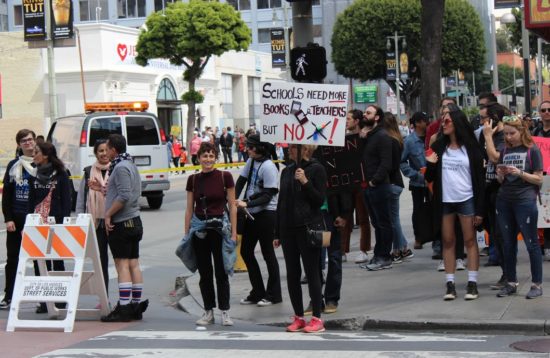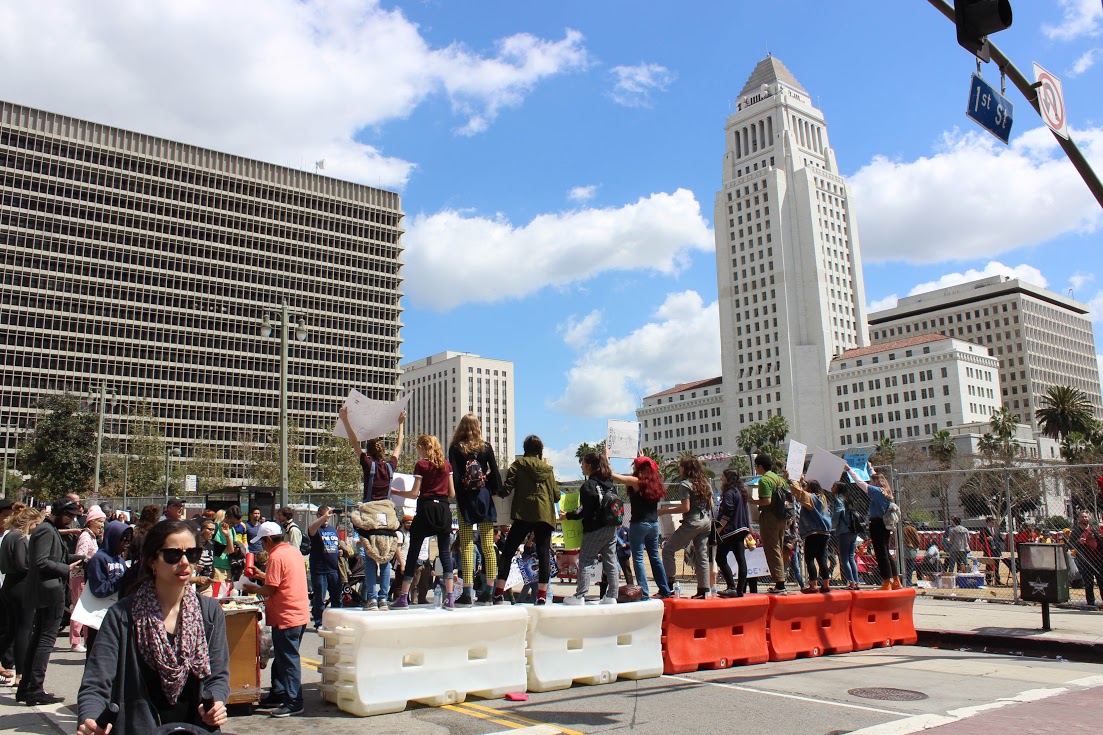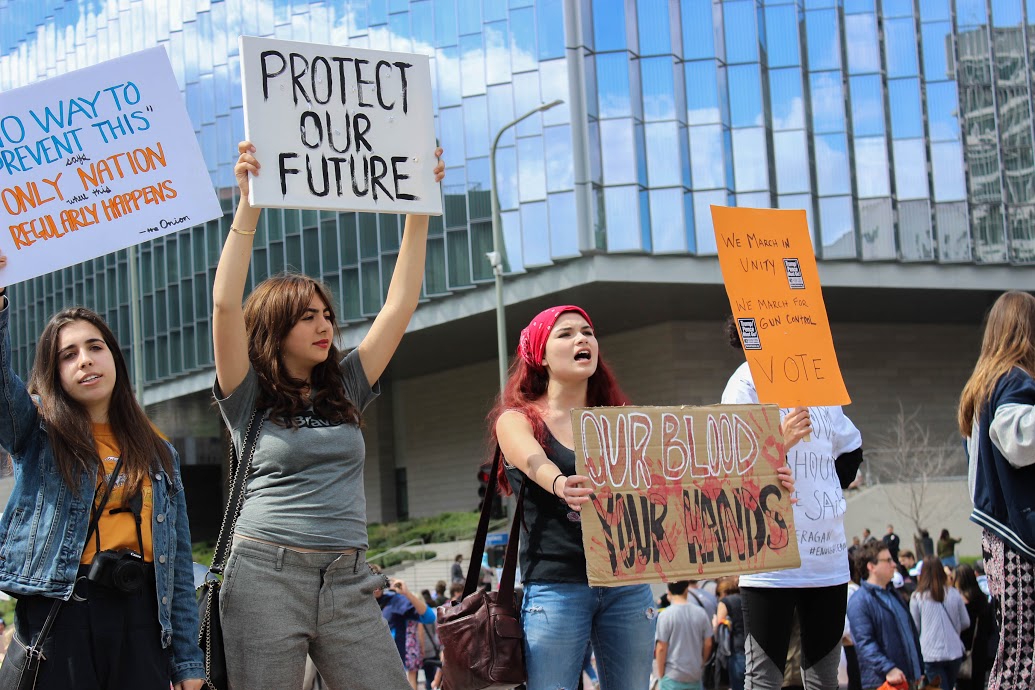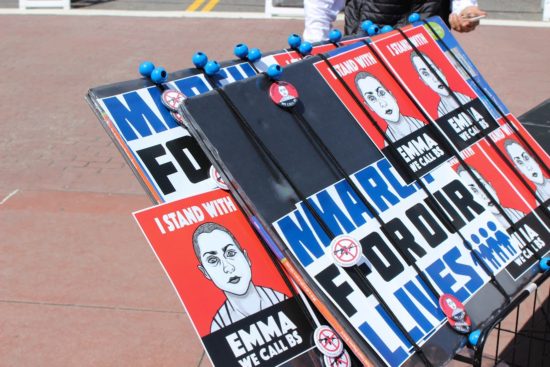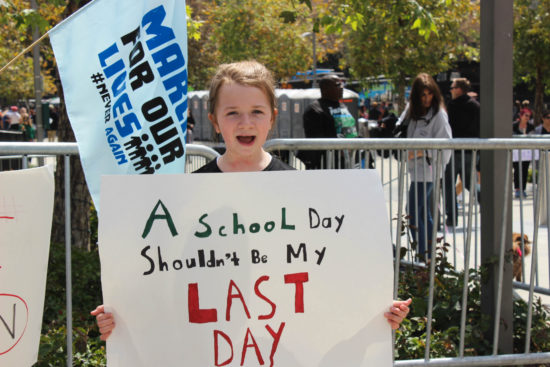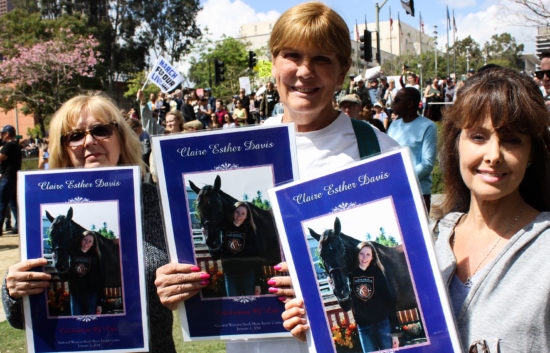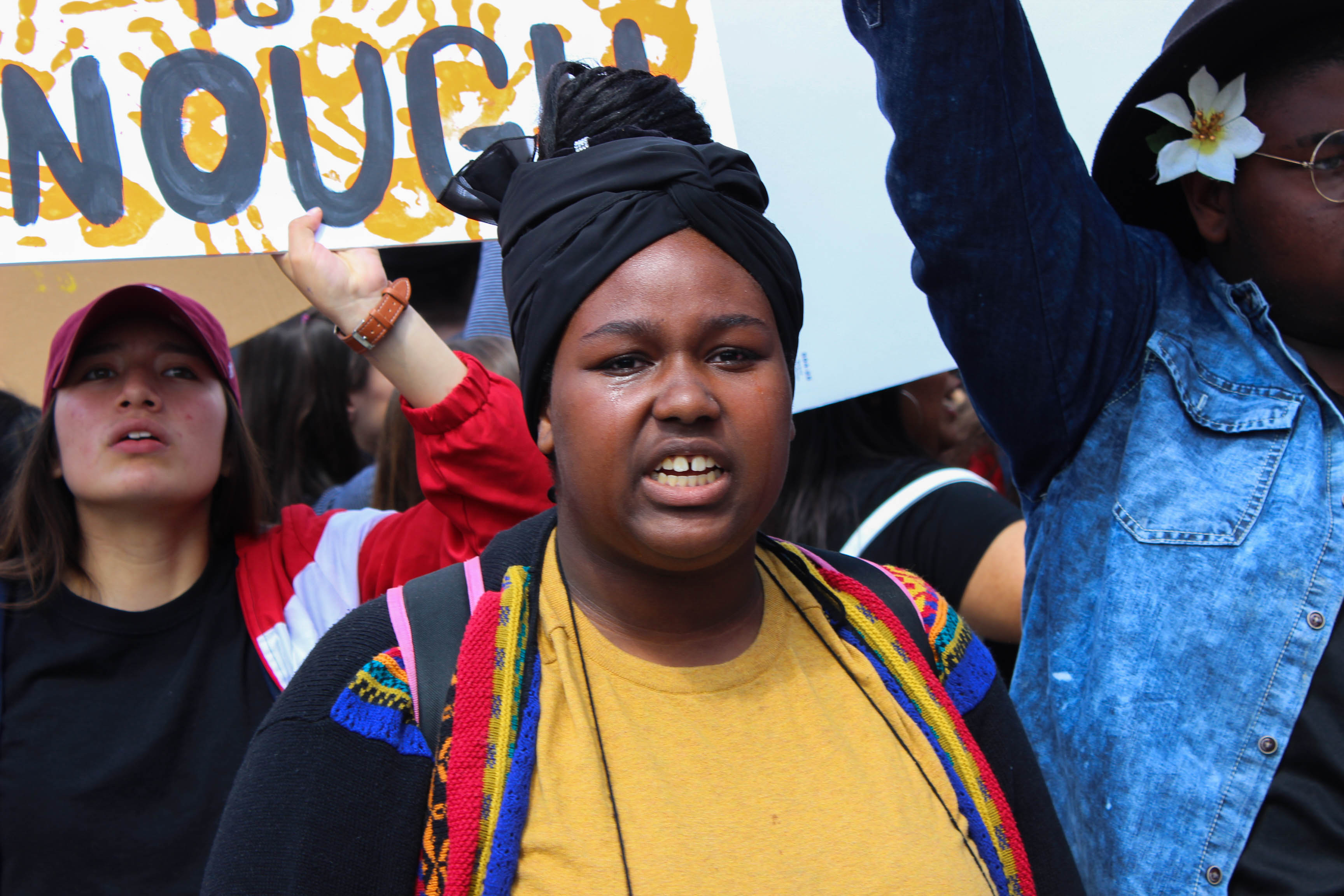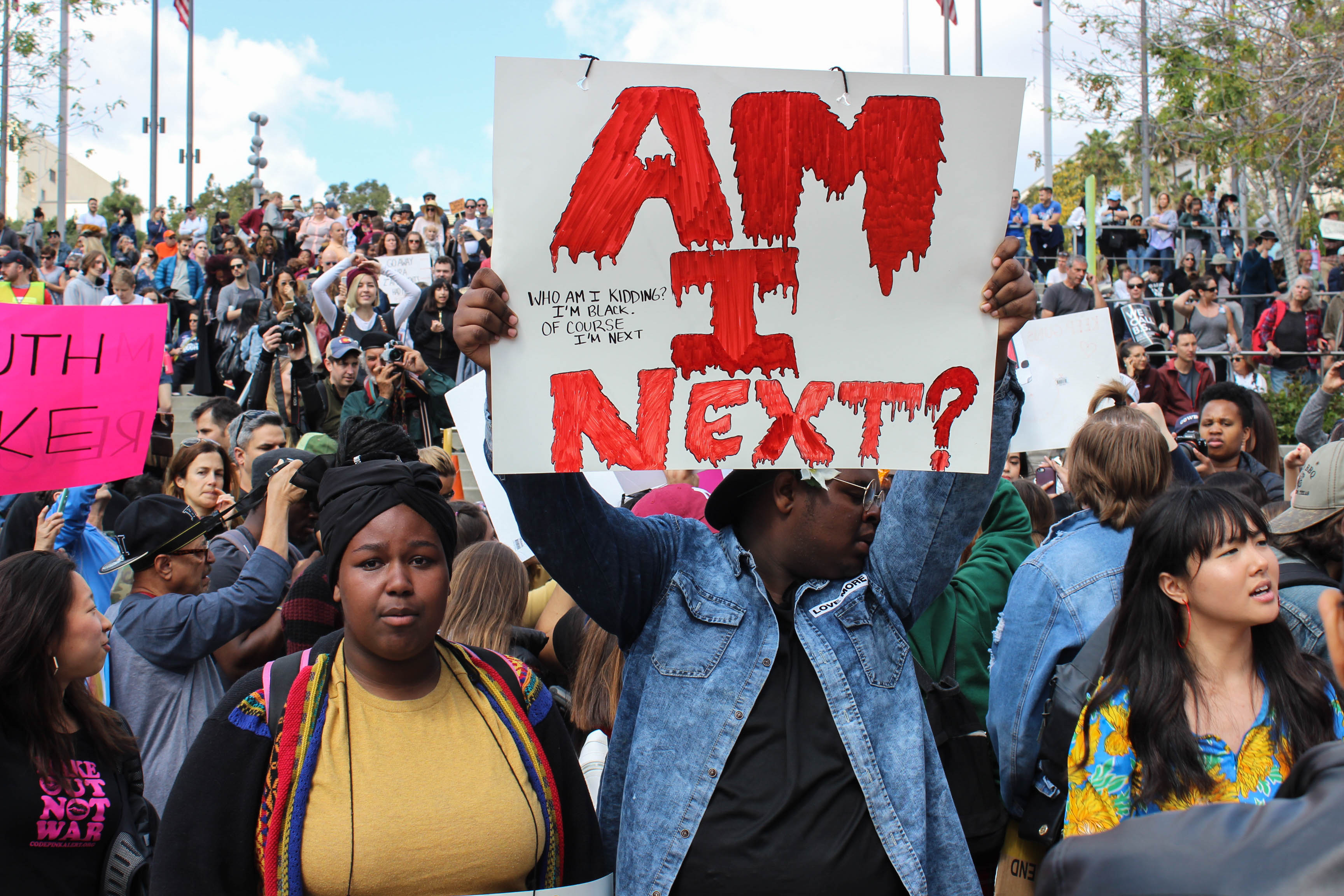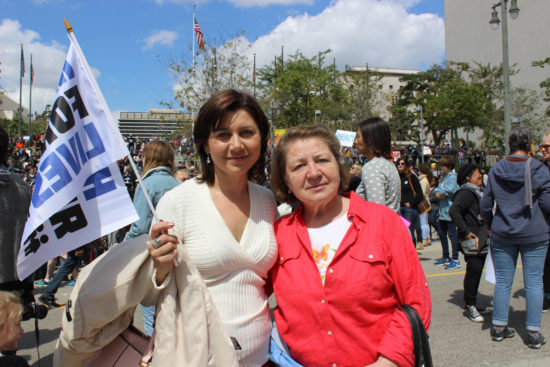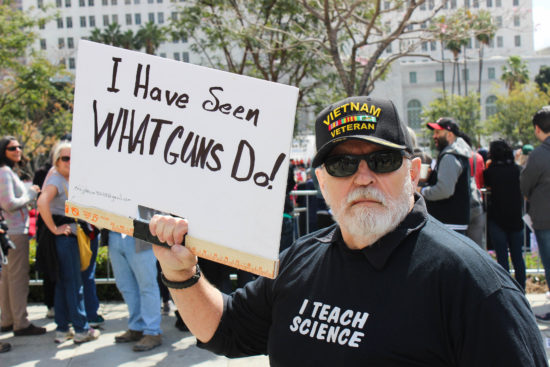The common goal: gun control.
In response to the pleads for gun control and school safety, President Trump has suggested arming teachers and giving them weapon training in case they face future shooter situations. Edith Pereda, an ESL and religion teacher at La Sierra Academy, said she would be entirely opposed to being armed, feeling that it would be very dangerous for both her and her students.
